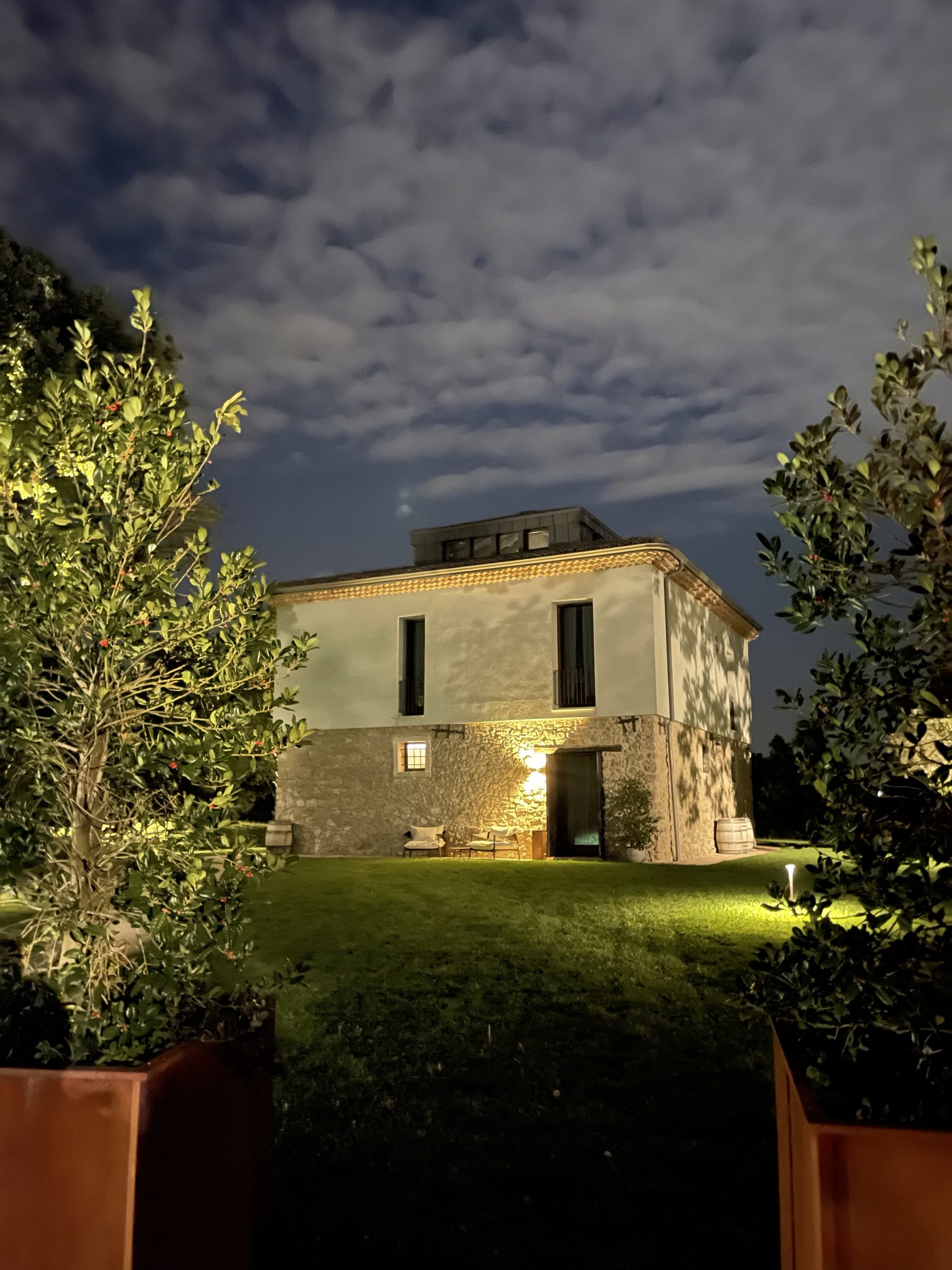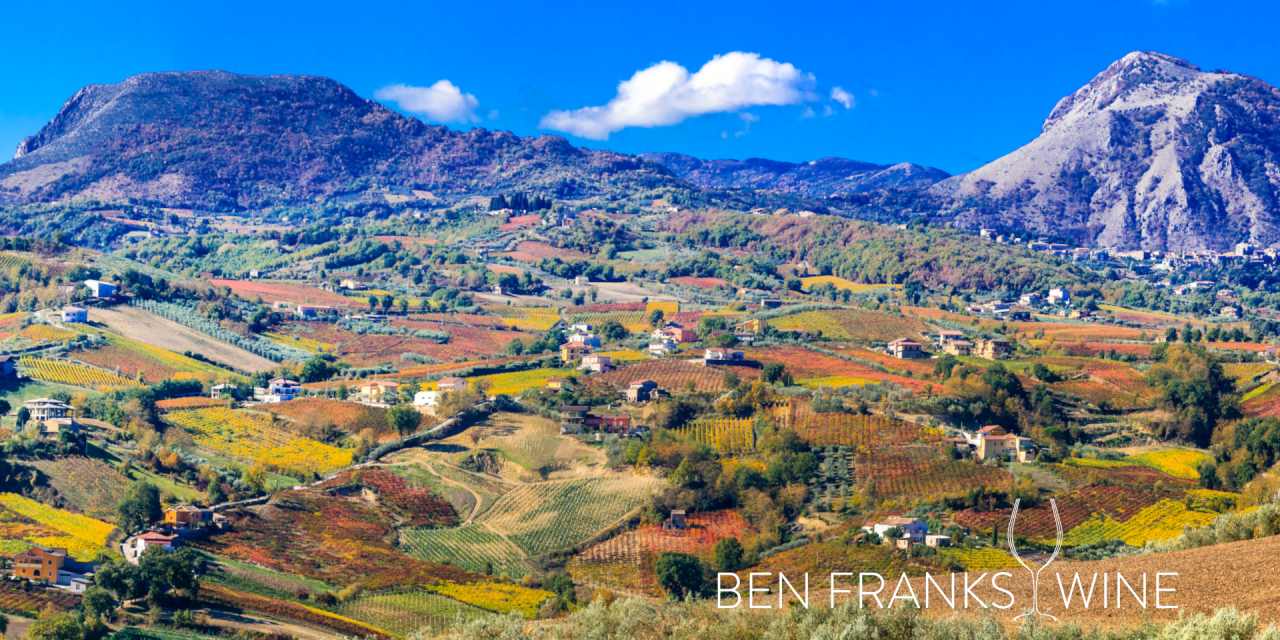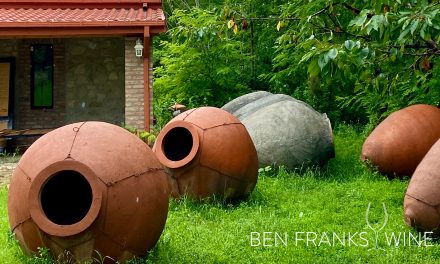Campania is lagging behind on its international reputation versus Italy’s more famous white wine regions Alto Adige and Friuli, but Feudi di San Gregorio is confident it’s found a solution in its commitment to indigenous grapes and single vineyard expressions.
In her debut article for Ben Franks Wine, Luma Monteiro recalls her visit to meet Feudi di San Gregorio’s CEO Antonia Capaldo, and her new found love for the wines of Campania, especially its Fiano and Greco grape varieties.
Last year, I had the pleasure of visiting Feudi di San Gregorio, a winery located in the heart of Avellino, just over 60km from Naples. The winery’s charming boutique hotel is nestled in the middle of the vineyards, surrounded by breathtaking scenery that transports you to another world. Inside, the decor was chic and stylish.
I spent the day with the winery’s CEO, Antonia Capaldo, who showed me that a few steps away from the hotel is the superb Restaurant Marennà, a gastronomic delight where you can sample modern Campania cuisine paired with Feudi wines. Antonio guided me around the winery, its garden where all the herbs for the restaurant come from, and tutored us on a private tasting of his most famous labels.

To give you some context, Campania is located in the south of Lazio, between the Mediterranean Sea and the Apennine Mountains, and has a rich history in winemaking. By the time of the Romans, the most esteemed wine was Falernian, a wine (no one knows for sure if it was white or red) produced on the slopes of Monte Massico in Campania. Today Campania is mainly known for its many easy-drinking wines and a few high-quality, famous wines. However, Feudi di San Gregorio is looking to its history and changing the scene in the region with its commitment to high-quality wines, investment in studying indigenous grapes, and single vineyard examples that showcase the potential of these grapes.
Feudi is located in Irpinia, a unique terroir within Campania, with a microclimate caused by specific winds. The winters are short, extremely cold, and snowy, which is unusual for Southern Italy. The soil in this area is heavily volcanic and sandy. There is a big movement to preserve indigenous varieties like the white grapes Fiano and Greco, and the red Aglianico, which are often called the archaeological varieties. Feudi di San Gregorio has been making its own Greco, Fiano, and Aglianico wines for thirty years, cultivating them on 300 hectares of land divided into 700 parcels with different elevations, exposures, and gradients. The winery’s research laboratory, FeudiStudi, has analysed the soils of these parcels to identify their strengths and weaknesses, as well as their particular flavour components. They have also created an impressive library of wines underneath the wine estate, with a collection of single vineyards and varietal wines, not all for sale, stored for study purposes. I had a sip of some, and they were so interesting. The winery has published an online, two-volume visual dictionary called Feudi Studi, with a compilation of the massive amount of research the winery has done on the region and its appellations, intending to share their knowledge with colleagues and competitors. It’s all about promoting the region collaboratively for the greater good.
Antonio Capaldo is deeply invested in preserving and promoting the unique heritage of the region. During our conversation, he spoke passionately about his vision for the future of Campania wines and the role that Feudi di San Gregorio hopes to play in achieving it. He explained how the three historical regions for whites in Italy – Alto Adige, Friuli, and Campania – evolved differently, with Campania lacking behind in fame and recognition.
One of the key factors in achieving this goal is the winery’s focus on single vineyard wines, planted on the highest altitudes of the region. According to Capaldo, these wines offer a unique expression of the terroir and can compete with some of the best wines from around the world. Capaldo also spoke about the importance of preserving and promoting the indigenous grape varieties of the region. Feudi di San Gregorio has invested heavily in studying these grapes and their potential, with the aim of showcasing the best that Campania has to offer.
Greco is less common in Campania than Falanghina but more common than Fiano. It’s the most unusual mineral wine and, according to Antonio, the crazy brother of Falanghina with its lower yield and darker colour in the glass. The wines are high in alcohol with an oily texture, and they have floral, stone fruit, and smoky notes. Most of them are unoaked, and the best can age in the bottle. This is what’s called a Sommelier wine, and it’s more famous in the UK as Italian sommeliers brought them to international restaurants, creating a bit of a reputation for Greco, especially its best expression, Greco di Tufo DOCG.
Fiano follows the same pattern as Greco. It’s mostly sold in Campania, but it’s not as well-known in the UK. This wine needs even more introduction in restaurants and wine shops. Fiano is the most balanced of the three, with less minerality but rich on the palate. It’s the big brother of Falanghina, according to Antonio. The wines have deliciously concentrated honeysuckle, peach, and hazelnut aromas and flavors, with refreshing acidity and a waxy texture. Fiano is grown in a range of soils, resulting in many different expressions. You can try the Single Vineyard Fiano di Avellino DOCG PietraCalda, my favorite wine of them all. I was in love!
Apart from the well-known red wine Aglianico, especially the famous Taurasi DOCG (Feudi’s own take on this is their iconic Serpico, made from century-old-pre-phylloxera vine Aglianico di Taurasi grapes), my bet would be on the white wines from the region. They are super unique and sell Campania’s story and the terroir at its best. From the Falanghina, the region’s workhorse grape with its fresh and easy to understand style, to the serious Greco and Fiano with great ageing capacity. Feudi has 10-year-old vintages that are still bright and fresh. These grapes don’t adapt too well in other areas, so they always taste better from Campania. These are the best, original expressions of the region.
My trip to Feudi di San Gregorio was truly an enlightening experience that sparked a newfound appreciation for the wines of Campania. The winery’s unwavering dedication to quality, innovation, and preservation of tradition is truly admirable and sets the standard for the region. Feudi di San Gregorio is showcasing the best that this often-overlooked part of Italy has to offer. As I write this, I can’t help but crave a bottle of their exquisite Pietracalda.






